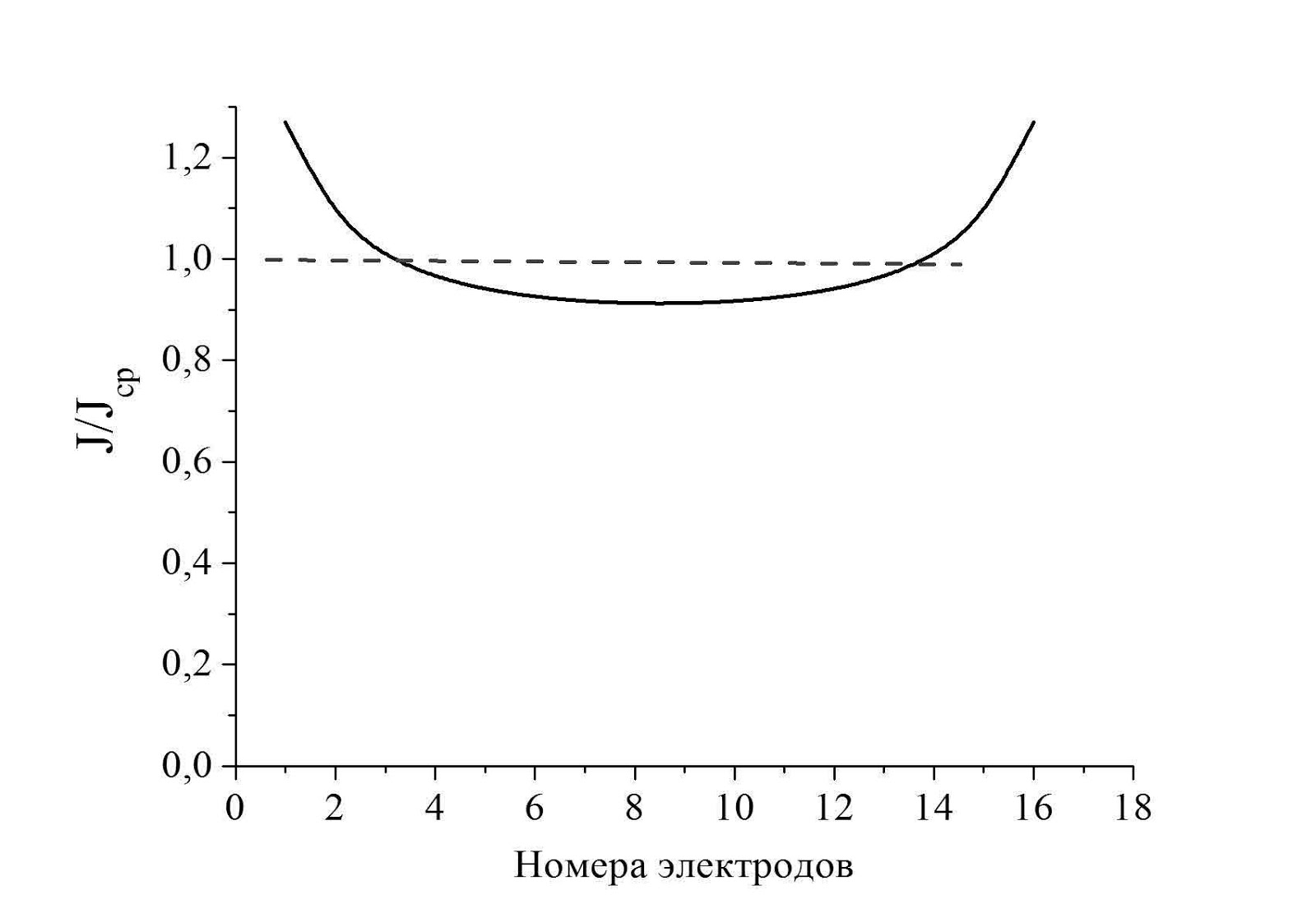From the series of articles "Grounding resistance calculation is almost easy".
In fact, this is the most complicated question in the grounding resistances calculation technique. With an asymmetrical arrangement, leakage currents differ even in absolutely identical grounding electrodes. To determine them, one has to solve a system of linear algebraic equations. Its size is equal to the number of electrodes in the circuit (or rather, even larger by one more equation). A system of several hundred equations for the ground loop of an industrial facility is not uncommon. You can’t do without a computer and at least without a small programming skill either. I suggest trying to avoid this problem without serious loss of the accuracy of the solution.

Leakage currents in a vertical rod electrode system
Номера электродов - The numbers of the electrodes
The figure shows the results of an accurate calculation of the linear density of the leakage current of vertical grounding electrodes 5 m long that were driven into the ground with a step of 3 m in a straight line (the load factors were determined above for them). The calculated values of the linear leakage current density are normalized by the average value of this quantity for the circuit as a whole. For that to happen, the current was divided by the full length of all grounding electrodes. It is easy to see that significant differences in leakage currents from the average value are characteristic only for the most extreme electrodes. All others have a difference of 10%. This circumstance gives the reason to limit ourselves in the calculations to the average linear density of leakage currents. Instead of a computer solution of a system of equations with a dozen or even a hundred unknowns, we manage to limit ourselves to calculating the total length of the underground electrodes lΣ, but the total current value is most conveniently taken to be 1; then the average linear leakage current density will be equal to
Jср = 1/lΣ
Read on "5. Boundary between soil and air".
Related Articles:
 3. Calculation technique
3. Calculation technique
 6. How to do that?
6. How to do that?

